Affiliate links on Android Authority may earn us a commission. Learn more.
What's the best camera phone? We tested dozens, here are our top 8 picks
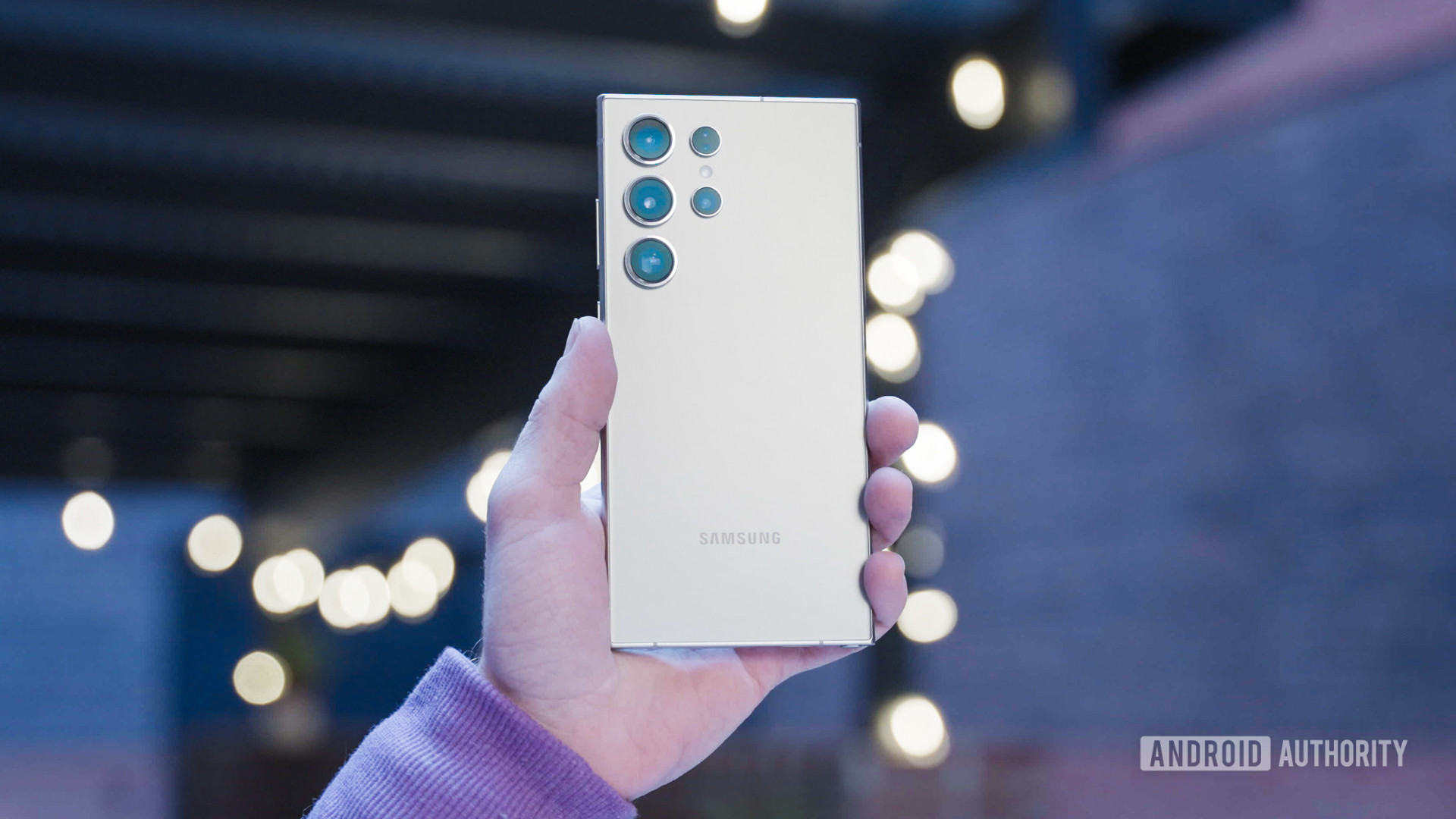
When was the last time you saw someone using a point-and-shoot camera? There’s a good chance it’s been a while. However, you probably see someone using their smartphone to take a picture on a daily basis. Smartphone cameras have become the go-to picture-taking method for many consumers, and cameras are becoming one of the most important factors when upgrading a device. If you find yourself looking for your next smartphone and want some guidance, we’re here to help. Here’s our list of the best camera phones available right now.
We’ve put each device through the wringer, testing the cameras in various situations to ensure we only recommend the best options. Let’s get into the results.
The Samsung Galaxy S24 Ultra is the best camera phone available
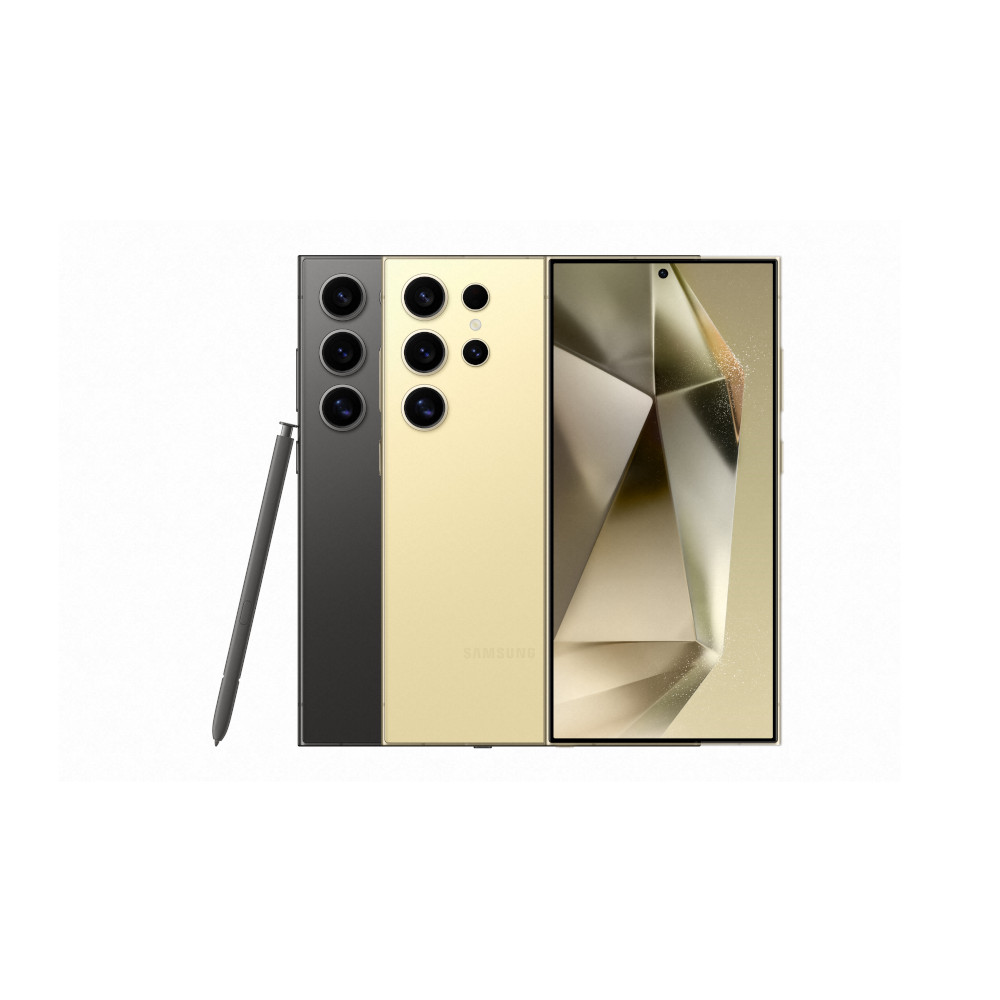
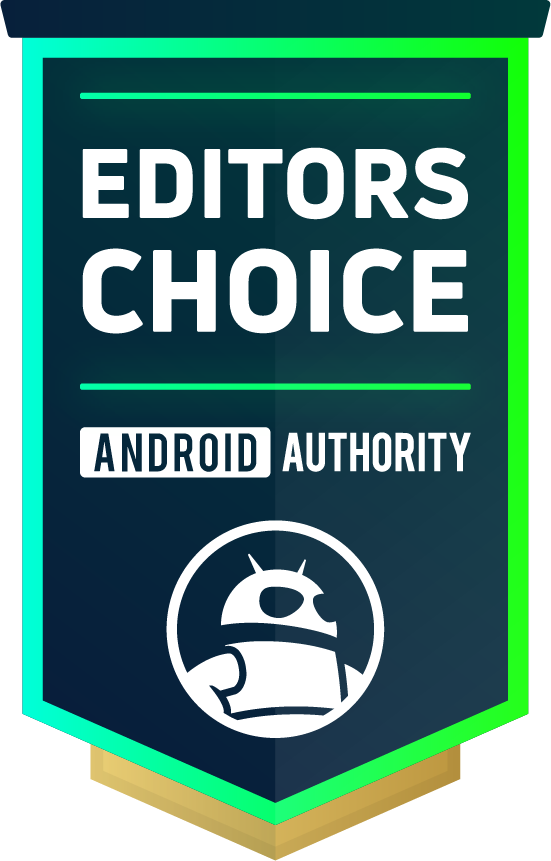
Samsung’s flagships land among the best all-around Android phones regularly, so it shouldn’t be surprising to see a Galaxy device immediately. We put the Samsung Galaxy S24 Ultra through its paces in our review, and its premium setup lives up to its high-end price. This is the best camera phone available right now and perhaps the best in the long history of smartphone cameras. Its sheer megapixel might on both the front and back, combined with in-depth control, make it the best camera phone for almost any user.
The new model’s main imaging toolkit is largely consistent with the Galaxy S23 Ultra’s except for the new telephoto camera. A wider aperture 50MP 5x snapper replaces the 10MP 10x telephoto, offering better mid-length zoom with a sensor crop for longer focal lengths. Beyond this tweak, we’ve seen a pretty similar experience across the two devices.
Samsung’s primary sensor is, of course, its megapixel-hogging 200MP Isocell HP2 once again. It’s backed by Samsung’s powerful 12MP ultrawide lens and a 10MP 3x telephoto that we haven’t mentioned yet. Around the front, you’ll find a 12MP selfie camera tucked into the Infinity-O display.
Although megapixels only tell a portion of the story, the combination of lenses sets the Galaxy S24 Ultra up nicely to excel in almost any situation. We’ve run it through a gauntlet of situations during our initial review, as well as a selection of comparisons against some of the other devices on this list, and it picks up right where its predecessor left off.
It returns clean, sharp images with decent HDR (but only when warranted), as well as Samsung’s standard color profile, which is finally inching a bit closer to reality. Of course, pixel binning makes the massive 200MP sensor a little easier to manage. You can push it back to the full resolution as needed, but we found that it still performed admirably at its lower resolution.
Despite the change in telephoto sensors, the Galaxy S24 Ultra remains sharp and competitive across its entire range. Its standard telephoto lens adds 3x optical zoom to the mix, while the periscope telephoto partner increases to 5x optical zoom. The result is that you can punch in much further on images without losing quality. Of course, as the third and fourth cameras in the setup, the telephoto shooters have much smaller lenses, but we didn’t notice too much drop-off in terms of color or clarity. No, 10x optical zoom won’t be as clean or as clear as 1x zoom from the primary camera, but it easily trumps hybrid and digital zoom from the phone’s closest rivals. Even Samsung’s ultrawide shooter keeps distortion to a minimum and is capable of nearly matching the primary shooter’s colors.
We regularly enjoy Samsung’s default camera app and its bevy of controls and shooting modes, and we’re waiting for the day when RAW support gets rolled in. Right now, the optional Expert RAW app provides that extra punch, offering even more control over your white balance, aperture, and shutter speed, as well as exporting RAW files for deeper edits later. It’s not the most approachable app for camera newcomers, but it’s the best way to push the four sensors to their limits.
Technically, you can go all the way to 100x Space Zoom with the Galaxy S24 Ultra, though it’s unlikely that you’ll do so frequently. This is where Samsung turns to digital cropping to get results, and the final photos aren’t quite up to snuff most of the time. We mostly only ventured past 30x Space Zoom for curiosity’s sake, but you do start to lose details and rely on Samsung’s post-processing. Intense zooming shows off Samsung’s image stabilization, however, which can go a long way in cutting out your shaky hands. If nothing else, you can also use the insane zoom options as a magnifying glass to read signs and menus from further away. We’ve also noticed that the Galaxy S24 Ultra struggles a bit with moving subjects, so you may have to click into manual mode and speed up your shutter for photos of kids and pets.
We have to give Samsung a little credit for not only keeping the Galaxy S24 Ultra with a hefty 5,000mAh battery but also keeping the charging speed punchy. In reality, that means you can fill the hefty cell in just about an hour, and the Snapdragon 8 Gen 3 for Galaxy continues to push the older processors further into the background.
What makes it stand out:
- Incredible zoom capabilities: Between its pair of telephoto zooms and cutting-edge software, the Galaxy S24 Ultra zooms better (and closer) than almost any other phone on the market — up to 100x.
- Unbeatable software support: Longer update commitments are becoming the norm, but Samsung still takes the cake. The Galaxy S24 series will receive seven full Android version updates and seven years of security patches, which carries it through to 2031.
- Ultra-premium design and build quality: Between the titanium frame and Gorilla Armor glass panels, it’s tough to find a more durable device on the market.
- Solid performance: The Snapdragon 8 Gen 3 packs enough punch to perform, and it’s more efficient than its predecessor. It’ll be at home on most 2024 flagships and combines nicely with 12GB of RAM across the board.
Best of the rest: 7 other camera phones worth considering
While we recommend the Samsung Galaxy S23 Ultra as the best camera phone for most people, it’s not your only option. Smartphone cameras aren’t one size fits all, and you might prefer another brand’s experience instead. You’ll find excellent cameras throughout our list, but it’s important to find the one that works best for you. Here’s the best of the rest:
- Google Pixel 8 Pro: The Pixel 8 Pro offers Google’s most powerful camera yet, adding an updated Tensor G3 chip with even more editing features to the already powerful trio of rear cameras.
- Apple iPhone 15 Pro: If you’re willing to try iOS, the iPhone 15 Pro has Apple’s most advanced camera setup to date. It features a 48MP main shooter, along with a host of other Pro-only upgrades.
- Sony Xperia Pro-I and Xperia 1 V: Sony’s flagships don’t come cheap, but they do bring a professional photography twist. You get in-depth controls as if you were using a DSLR or mirrorless device, and Sony is one of few brands to still rock a headphone jack in 2023.
- Google Pixel 7a: Google’s Pixel 7a brings the same flagship-level image processing at a much more approachable price point. It carries the Tensor G2 chip, just like the Pixel 7 Pro, and you get an upgraded pair of rear lenses.
- OPPO Find X7 Ultra: This flagship is one of the most stylish camera phones — possibly of all time. The only problem is that it’s still almost impossible to get your hands on outside of China. OPPO’s Find X7 Ultra also packs Hasselblad tuning for improved color science — even in low light.
- Xiaomi 14 Ultra: The Xiaomi 14 Ultra is the company’s most powerful and refined device yet, and it doesn’t fall far from its predecessor. It’s more like a camera with a phone strapped to the back, dominated by an expansive camera bump and 50MP lenses.
- HONOR Magic 6 Pro: HONOR’s Magic 6 Pro packs more megapixels into its telephoto sensor than most primary cameras, and the rest of the setup isn’t half bad, either.
The Google Pixel 8 Pro is best for excellent image-processing software
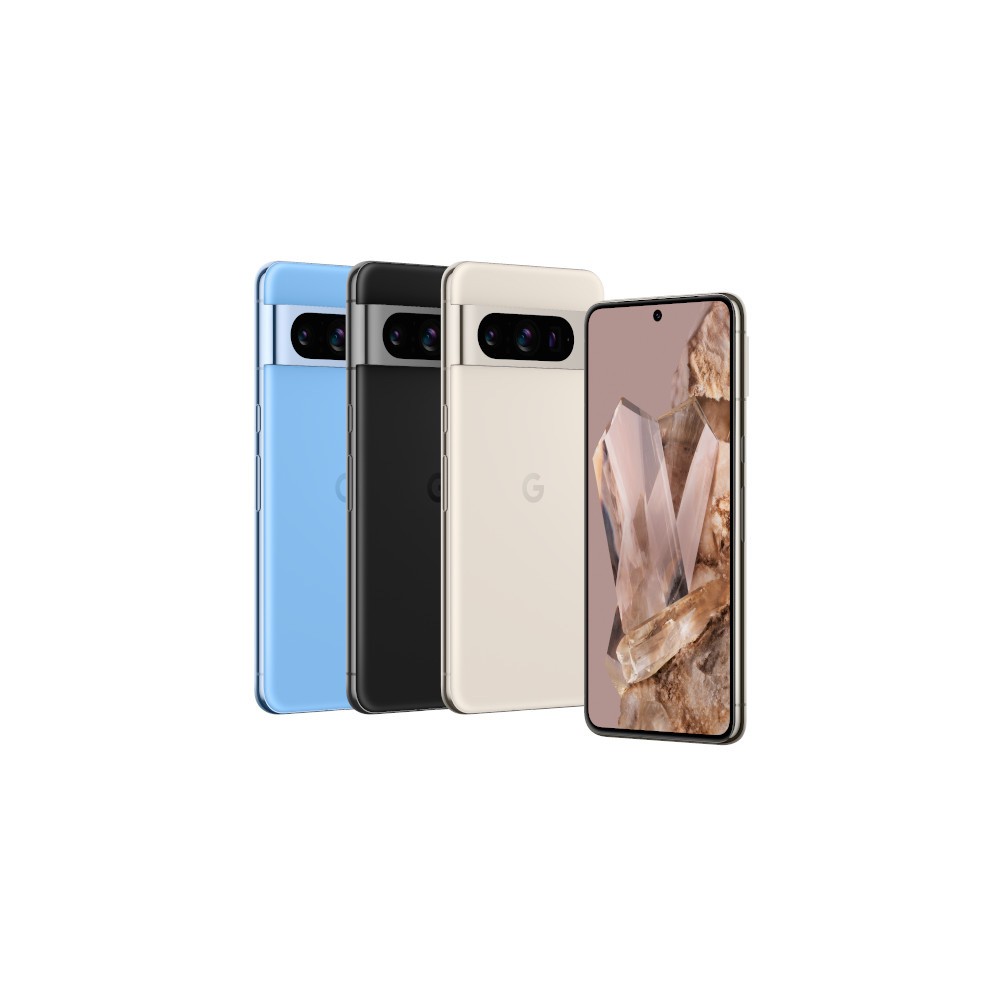

The Google Pixel line is no longer an example of high-end image processing with modest hardware. After years of punching above its weight class with software alone, the Pixel 8 Pro packs the hard-earned muscles to compete with the best camera phones around. It builds on the upgrades of the previous Pixel 7 series and infuses them with even more editing tricks courtesy of the Tensor G3.
Google’s latest flagship makes a few small hardware tweaks from its predecessor, mostly adding megapixels to the ultrawide sensor. The Pixel 8 Pro’s 50MP primary sensor and 48MP telephoto sensor still shine, and the latter is still locked in at 5x optical zoom. If you go Pro, you’ll also find a 48MP ultrawide lens to round out the aluminum-coated camera bar. On top of that, Google’s swap from glossy to matte glass gives the Pixel 8 Pro a new level of polish and comfort in the hand.
Of course, how you use a camera is often the deciding factor above sheer specs, and the Pixel 8 Pro is no different. It still offers a slimmed-down approach to the camera interface, preferring to let the updated Tensor G3 chip do the bulk of the thinking. You can choose your shooting mode and your subject, but now the Pixel 8 Pro has a brand-new trick: manual controls. You can finally dig into the shutter speed, ISO, and much more to make your images feel a bit more like your own. We once again took a mountain of photos around Paris to put the Pixel 8 Pro through its paces, which you can see here.
We’re still waiting on the results of our next in-depth camera test, but it’s tough to see the Pixel 8 Pro giving up much room. Its predecessor edged the Galaxy S23 Ultra in recognizing scenarios where HDR is important, and we still love Google’s natural color profile over Samsung’s saturation.
Google's Tensor G3 is the secret behind its long-term software updates and much more.
In fact, we went so far as to say that the Tensor G3 chip improves one feature that’s not easily replicated — reliability. It adds features like Photo Unblur and an automatic macro in the palm of your hand, in addition to existing options like Face Unblur and Real Tone. We found that Real Tone delivered accurate skin color recreation, even in difficult lighting scenarios. Further wrinkles like Action Pan and Long Exposure free up even more creativity — we loved freezing a subject in the middle of the action, and capturing a soft, flowy waterfall isn’t bad, either. In fact, you might find yourself missing the automatic long exposure feature when you switch to any other smartphone camera. The Pixel 8 Pro’s effortless processing and onboard smarts allow it to compete against superior hardware and pick up software features long after launch.
Of course, the enhanced camera chops and price aren’t the only things landing Google on our list of the best camera phones. The Pixel 8 and Pixel 8 Pro make the most of the new Tensor G3, which finally seems to have pulled its thermal performance into check. Google’s long-term Tensor plan is now clearly visible, too, with the Pixel 8 series picking up a whopping seven years of updates.
Unfortunately, Google’s days of slam-dunk values might be behind us. The Pixel 8 Pro picked up a $100 price bump, raising it to a cool $999. Its Pixel 8 sibling now costs $699, which is still a great value but not as sure-fire as its predecessor. You’ll have to spend a little more if you want extra storage, but you won’t scratch the asking price of most competitors.
What makes it stand out:
- Google’s Tensor G3 chip: Offers excellent post-processing and image editing capabilities like Magic Editor and now can handle seven years of software support.
- First-in-line updates: OEMs across the board are getting better at quick updates, but you still can’t beat Google. As the creator of Android, all Pixel devices remain at the top of the list regarding the latest and greatest software (and beta access).
- Unique design: Android used to emphasize being together but not the same. Now, the Pixel 8 series is one of few examples to skip a corner-mounted camera array and adopt a boxy design to stand out.
The Apple iPhone 15 Pro is the best iOS camera experience
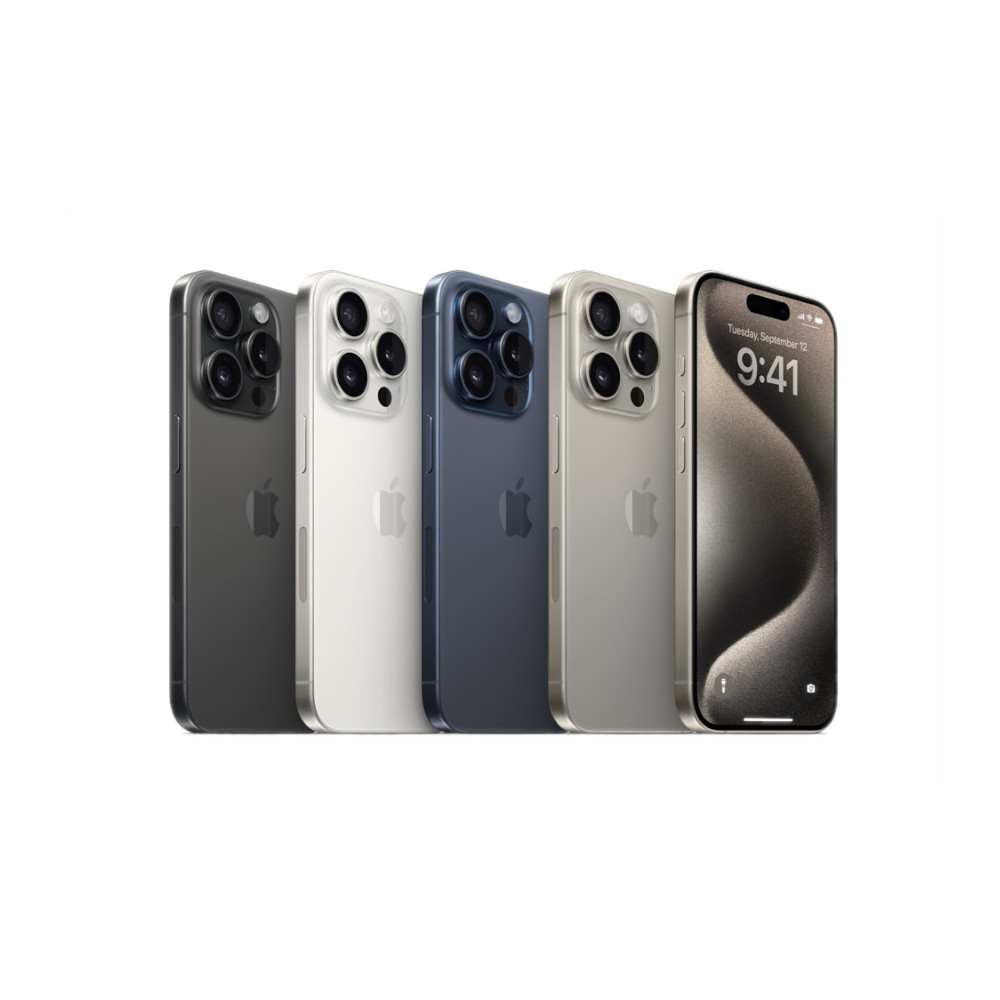
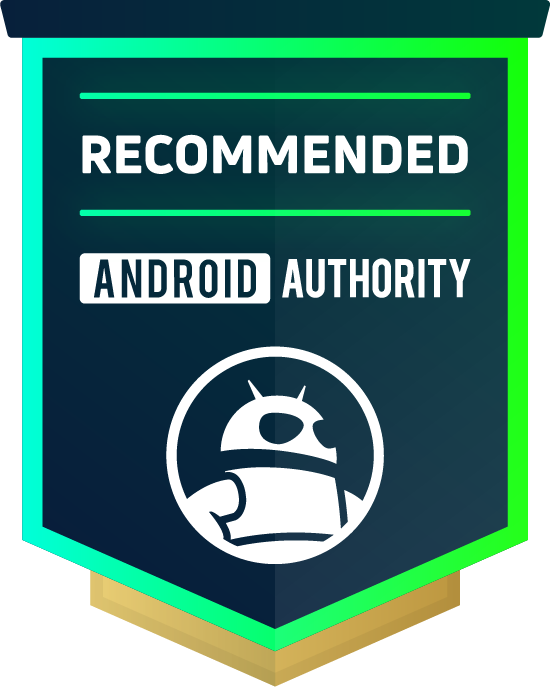
We are Android Authority, and most of this list is dedicated to Android camera phones, but it’s still impossible to leave Apple out entirely. The iPhone 15 Pro — or its larger Pro Max variant — continues some of the major camera updates from its predecessor, including the high-resolution primary sensor.
Apple adopted a 48MP sensor on the iPhone 14 Pro, which it’s taken to calling the main camera rather than the wide camera, and paired it with two familiar 12MP backups. The same trio is back for the iPhone 15 lineup. That means you still get a powerful, flexible triple-camera setup, and it still performs admirably against the best that Android has to offer. The iPhone 15 Pro keeps a relatively natural color profile, which will be pleasing for most users. Apple even claims a 6x optical zoom range, though it’s using the 0.5x ultrawide and 3x optical telephoto to get there.
Apple’s detail recreation is excellent, and the iPhone itself is best described as a creator’s toolkit. If you’re willing to shoot in RAW, you can export massive files straight from the main camera and edit them to your heart’s content in Lightroom. Apple also lets you set your photographic style upon setup, which means you can tweak your contrast and tint to match your personal style. We stuck with the true neutral profile for our tests, and it worked nicely.
We’ve focused primarily on still images through our top camera phone picks so far, but the iPhone shows its strength as a video camera option as well. It offers a special Cinematic mode for video, which adds digital bokeh and autofocuses on faces as they look at the camera. We found that the feature generally worked as advertised, though it can struggle with multiple faces at one time. You’ll also have to stump extra cash for professional costumes and lighting before you can make the iPhone 14 Pro a true go-to for your feature film. Apple’s ProRes video also delivers lossless compression, which makes editing your footage slightly more manageable.
As for the phone itself, the design is classic iPhone with a twist. It’s as tough as ever, with a Ceramic Shield front and a durable IP68 rating. However, Apple ditched its previous stainless steel frame for a titanium one — in case you haven’t seen every iPhone 15 Pro ad ever. The iPhone 15 Pro has slightly softer edges, too, that meld to the palm of your hand rather than cut into it.
Apple's flagship doesn't fall far from the tree, but it improves on an already excellent camera package.
Under the hood, you also get Apple’s latest A17 Pro chipset, with 8GB of RAM and up to 1TB of onboard storage. As you’d expect from a flagship chipset, the A17 Pro puts up staggering numbers, improving upon Apple’s recent processors by a good margin. It also does this with less RAM than many Android devices — especially those at the same price tag — which speaks to an impressive optimization process.
We can’t skip over the fact that the iPhone 15 Pro has a smaller battery than most of its competitors. It easily reaches a day and a half if you’re willing to part with some battery drains like the always-on display. Unfortunately, Apple’s modest wired and 21W (or thereabouts) wireless charging isn’t the fastest, but you can finally ditch your Lightning cables thanks to all iPhones now relying on USB-C.
What makes it stand out:
- iOS at its best: Apple’s software has come a long way, and it’s best experienced with modern flagship power. iOS 16 packs new lock screen customizations, and there’s no denying the excellent optimization, especially when it comes to battery life.
- MagSafe capabilities: MagSafe isn’t a new term, but the unique magnetic attachments give the latest iPhone flagships several new wrinkles. From wireless charging to attaching a wallet to the back panel, there’s plenty of magnetic flexibility.
- Premium video capabilities: Every phone on this list has the potential for excellent still images, but the iPhone 15 Pro leaps to the top when it comes to video. Features like Cinematic mode and ProRes deliver smart autofocus and lossless exporting for your home masterpiece.
The Sony Xperia Pro-I is the best for professional camera controls

There’s no denying Sony’s place among the best camera phones, though it comes with a few caveats. Depending on where you live, we’re recommending different devices in the lineup. Really, it comes down to a matter of price and availability, but both options deliver impressive quality and high-end camera controls.
Up first is Sony’s Xperia Pro-I, which is the better choice for users in the United States. It’s taken up the mantle as Sony’s professional-grade imaging smartphone, following on the heels of the original Xperia Pro. The Xperia Pro-I also adopts a slightly different design from the brand’s other flagships, shifting the camera array from the corner into the center to give the massive camera sensor enough room to perform. Just be ready for the enormous price tag to match — the Sony Xperia Pro-I will set you back $1,799 for 12GB of RAM and 512GB of storage.
As Sony’s pro-focused camera phone (with all of the irony that entails), you get a pro-focused camera interface as well. The in-app controls and ZEISS optics feel like they were shaved straight off of a full-frame shooter, as does the control over the camera aperture. You can pull up a virtual PASM dial, which the app will then explain to you before you can dive in. As soon as you choose a mode other than Automatic, the app opens options for autofocus, flash, exposure compensation, and so much more. Like Samsung’s Expert RAW, it can be overwhelming for beginners but can feel like a secret weapon for camera pros.
Interestingly, Sony’s Photo Pro app also dictates that you have to use the hardware shutter button rather than the software version. It’s rare to see a physical shutter button on a phone these days, let alone mandate it. We also found Sony’s approach to zoom more complicated than necessary. Instead of pinching to zoom across the entire range, you have to zoom based on each lens. The 16mm equivalent only lets you punch in up to 24mm before you have to switch lenses to zoom to 50mm, and so on. It’s true to how a full-frame camera’s zoom would function, but feels like an extra hoop to jump through on a smartphone.
Sony chose a massive primary sensor, which is capable of letting in a ton of light and giving your images some juicy bokeh. Unfortunately, the tight form factor means that the phone can’t use the entirety of its massive sensor, but it sounds good on a spec sheet.
Sony's large sensor and ZEISS glass come with a ridiculous price tag to match.
In terms of actual performance, the Xperia Pro-I follows the Pixel 7 Pro down the road of natural results, almost to a fault. The color recreation is incredibly close to reality, and sometimes comes out muted as a result. They may not be what every smartphone photographer is after, but if you’re willing to put in a little editing legwork, you can bring them to life. We captured some of our samples in 12-bit RAW, which we could then ship to Lightroom and tweak to our hearts’ content.
A few of our sample shots came out underexposed as well, though some of this could be attributed to the Xperia Pro-I’s aperture. It’s not as wide as some class leaders, which means less light reaches the sensor despite its massive size. You might also be surprised to hear that Sony’s photography flagship skips a traditional portrait mode. Instead, it tries to compensate for it with bokeh when set to f/2.0. It doesn’t blur the background to the extent of portrait mode, but it’s enough to set your subject apart nicely.
Overall, we enjoyed using the Xperia Pro-I throughout our testing. Sony’s tall, thin design is familiar at this point, and the 21:9 aspect ratio is longer than most competitors. It’s as tall as the Pixel 6, though not nearly as wide. Premium build materials like Gorilla Glass Victus and a textured side rail complement the rear camera (which is the focal point of the design) nicely.
It’s not exactly a perk related to the Xperia cameras, but the phone picks up another use if you’re a Sony photographer already. You can now hook it to your camera rig to serve as a sharp external monitor while you capture photos and videos. How often do you get to run around with a 4K viewfinder? We’d guess not very. It’s as simple as using the USB-C port, and you can upload shots right to Instagram without ever running back to a laptop.
We could continue all day about the tech that Sony packed into its Xperia Pro-I, but it might be best to read up on our thorough breakdown in our review. It’s packed with samples and detailed information on the advanced features and controls.
What makes it stand out:
- Premium design: Sony didn’t skimp on any of the materials for the Xperia Pro-I. It blends Gorilla Glass and a textured frame for a great in-hand feel, and the ZEISS camera takes the starring role on the back panel.
- Excellent camera controls: The Xperia Pro-I packs professional-grade controls for both photo and video in Sony’s dedicated apps. You can access different dials in both Photo Pro and Cinema Pro, depending on what you want to create.
The Sony Xperia 1 V is another option, and it’s no longer restricted to shoppers outside the US. You can get Sony’s latest flagship for £1,299 in the UK or €1,399 in mainland Europe, and it’s finally dropped to a more approachable $1,399 in the US. It still offers most of the features that tend to set Sony flagships apart, including long-lost goodies like the headphone jack and expandable storage.
Sony’s Xperia 1 V features updated camera capabilities beyond its expensive sibling, though it takes a different approach to its primary sensor. It now packs a 48MP primary shooter backed by a pair of 12MP shooters with ultrawide and periscope zoom coverage. However, the new lens is permanently binned to 12MP out of the box, which is done in order to use different zones of the sensor for photos and video. We were particularly impressed by the autofocus, which is easily at the top of the list for smartphones, and it outweighs some mirrorless cameras, too.
You can check out our in-depth camera shootout comparison here, which features the Xperia 1 V taking on the best from Apple, Samsung, and Google.


The Google Pixel 7a is the best camera phone if you’re on a budget
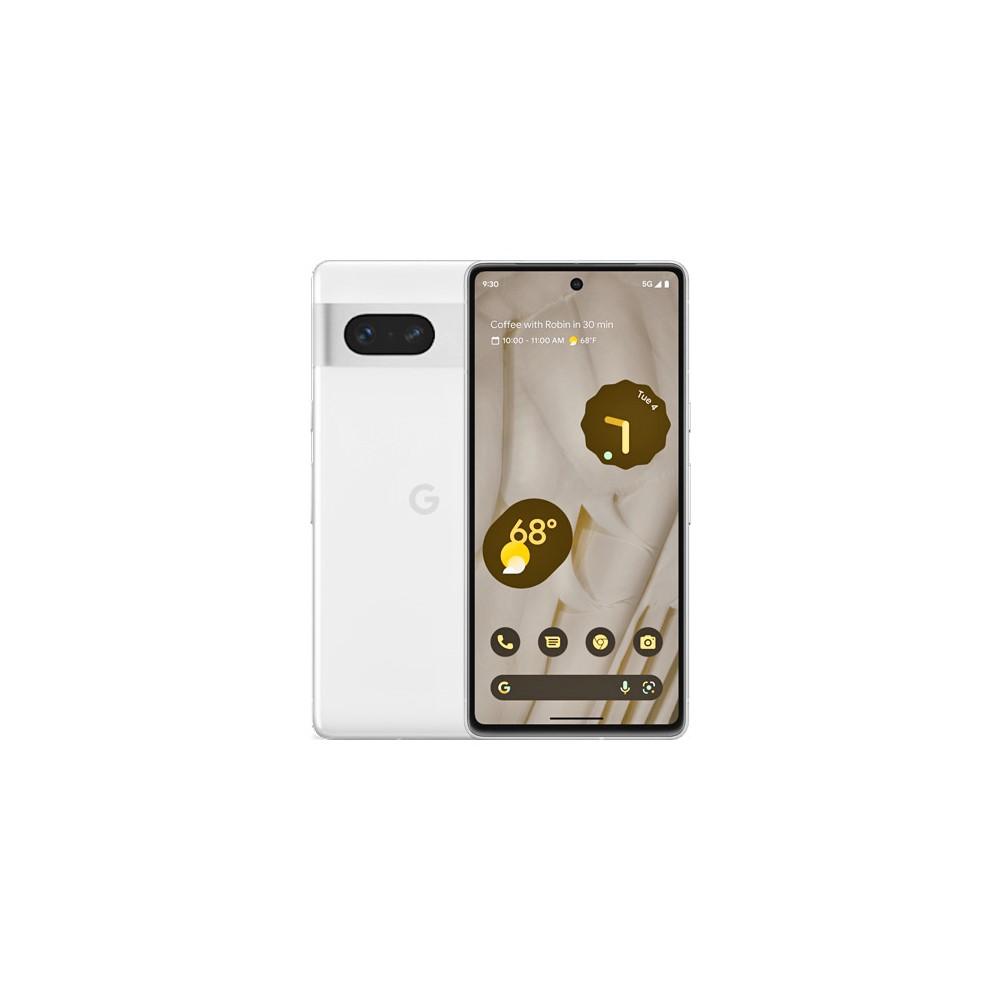

Looking for something more affordable? Look no further than the Google Pixel 7a. It’s currently our pick for the best budget camera phone you can buy, and that’s in large part thanks to all of the features it shares with its more expensive sibling, the Pixel 7.
Although it comes in cheaper at $499, nearly everything we wrote about the Pixel 7 Pro’s cameras above holds true here. It has the same Tensor G2 chipset, which unlocks great Pixel-only features like Night Sight, Magic Eraser, and more. The camera hardware itself also finally broke free from the 12MP sensor Google has been using for years, jumping to a 64MP main shooter and 13MP ultrawide lens. Both were great performers in our Pixel 7a review, with great colors and white balance. Google sticks to a very easy-to-use camera app that works great as a simple point-and-shoot camera phone, even if you’re not much of a photographer.
Speaking of point-and-shoot, we loved the physical size of this phone. It’s smaller than the standard Pixel 7 with a 6.1-inch OLED screen. That made it comfortable for one-handed use, even if you don’t have gorilla hands. However, the build quality is noticeably worse than flagship alternatives, with a plastic backing. You’ll definitely want to slap a case on this.
The Pixel 7a takes Google's new design language and compresses it into a palm-friendly 6.1-inch body.
Pixel UI remains one of our favorites when it comes to achieving a nearly-stock Android experience. It’s smooth and light, with very little bloatware, and it’s always at the front of the line when it comes to software updates. You can feel the impact of Material You throughout, with customizable widgets and first-party app icons that adapt to your wallpaper. And like all Pixel phones, it will receive three years of Android updates and five years of security updates.
One of the Pixel 7a’s main drawbacks comes in its battery life. This year’s model includes wireless charging, but the overall capacity is lower and charging speeds are stuck at 18W. It took more than two hours to charge to full, so we recommend plugging it in before bed and leaving adaptive charging on overnight. The phone’s 90Hz display is also toned down to 60Hz by default (likely to save battery), and it barely made it through a day of moderate to heavy use in our testing. It’s also slightly pricier than its predecessor at $499, but if that’s too rich for you, the Pixel 6a is down to $349, and it was our previous favorite budget camera phone before the release of the Pixel 7a.
What makes it stand out:
- Unbeatable price: Most camera phones on our list start at $899 or above, yet the Pixel 7a packs a flagship-level experience for about half that price, making it one of the best cheap phones around.
- Pocket-friendly design: Google’s Pixel 7 and Pixel 7 Pro are large, boxy devices. The Pixel 7a compresses the best features into a smaller, more manageable package.
- Tensor-powered processing: The same powerful Tensor chip from Google’s latest flagships is right at home on the Pixel 7a. That means it’s capable of matching the image processing potential with Real Tone and Face Unblur, plus more Pixel features to come.
The OPPO Find X7 Ultra is the best-looking camera phone


Style isn’t always a defining factor when buying a great camera phone, but when it looks as unique as the OPPO Find X7 Ultra, it’s worth mentioning. The flagship is a direct successor to the equally stylish Find X6 Pro, complete with styling that reminds us of a premium mirrorless camera. However, you’ll still have a tough time getting your hands on OPPO’s latest, as it’s currently limited to the Chinese market.
OPPO’s all-out approach to photography is what earns the Find X7 Ultra its place on our list. It skips the lenses for lenses’ sake approach and doesn’t really have a true primary camera, either. All four of the Find X7 Ultra’s rear shooters pack 50MP and use some of Sony’s most powerful stacked sensors to get the job done.
So far in our testing, we’ve found that the phone has no problems nailing exposure and white balance in outdoor situations, along with decent details. Its 2x zoom results are on par with its standard snaps, thanks to its pair of telephoto lenses. The Find X7 Ultra has also learned from a few of its predecessor’s flaws and handles zoom much better than before.
OPPO decided that you don't need a primary camera if all four lenses are excellent.
OPPO’s selfie camera performed better than most during our time with it as well. It inserts an extra white pixel into the standard RGB filter to help with light capture, and we found that it wasn’t just a claim for the spec sheet. Our samples were well exposed with minimal noise, though the details can be a bit soft. We did appreciate the ability to tune the Find X7 Ultra’s bokeh for portrait mode, which isn’t always a guarantee.
Moving beyond the camera, OPPO’s 100W wired SuperVOOC fast charging and 50W wireless charging can both fill the 5,000mAh cell in a hurry. In fact, this is up there with the best wireless charging you’ll find on our list. We also achieved somewhere in the range of six to eight hours of screen-on time with reasonably heavy use, landing among the best Android phones on the market. The results are good considering the power requirements of Qualcomm’s Snapdragon 8 Gen 3 chipset. Like previous OPPO flagships, the device comes tuned to a lower performance setting out of the box to maximize that battery potential. It delivers great results in terms of graphical performance, even if the raw numbers don’t always add up.
What makes it stand out:
- Luxury style: OPPO upgraded its two-toned leather and glass design with a finish that feels like it was plucked from a premium Hasselblad camera.
- Excellent charging and battery life: 100W wired charging is excellent, regardless of battery size. OPPO’s 50W wireless speeds are remarkable, too, and the 5,000mAh cell lasts for hours upon hours.
The Xiaomi 14 Ultra is one of the best co-branded camera phones


If we’re being completely honest, the best camera phone you can buy is also one of the hardest to get your hands on — the Xiaomi 14 Ultra. It’s perhaps the best Xiaomi camera flagship to date, managing to improve on the already excellent Xiaomi 13 Ultra with a camera setup that goes to 11.
In our brief hands-on experience, we were quick to point out just how deep the Leica integrations are, and we stand by that. The Xiaomi 14 Ultra is the third semi-global flagship to launch with the Leica co-branding onboard, and it does so with not one but four 50MP camera sensors on the back. Rather than sacrificing quality to zoom in or out, you have 50MP of power at all times.
The camera bump may be huge, but Xiaomi's lenses put it to good use.
The hefty camera bump includes primary, ultrawide, telephoto, and periscope options, along with a 3D ToF sensor. Of the four, only the primary sensor is a 1-inch model, but the rest still pop in at 1/2.51 inches, which is still plenty large. Overall, the flexibility is excellent, as are the daytime images through the primary camera. Portrait mode can be a little tricky as different zoom lengths are modeled after Leica lenses, but you can figure it out with a little practice. Noise is minimal, though there were occasions where the results had less resolvable detail.
Perhaps just as enjoyable as the quality of Xiaomi’s Leica-tuned lenses is the color science they employ. You can choose between a pair of color profiles: Leica Authentic and Leica Vibrant. As the names suggest, Authentic is closer to the classic Leica look, while Vibrant pumps the saturation just a bit in reds and greens.
If you want to test Xiaomi’s low-light chops, you’ll be plenty impressed. We found that the primary camera shines when the light is low. The one-inch sensor captures plenty of light and makes good use of pixel binning to stretch its capability even further.
Of course, the Xiaomi 14 Ultra is one hefty device. It’s large and only gets larger if you pick up the optional rear camera grip. If that’s a bit more than you’re after, you can also check out the Xiaomi 14.
What makes it stand out:
- Fingerprint sensor: In-display fingerprint readers are the go-to for most flagships, and Xiaomi’s is no slouch. It’s fast and accurate.
- Leica look: Xiaomi’s Leica Authentic color profile has quickly become a favorite of ours. While it’s not perfectly natural, it offers that famed Leica look that photographers love.
The HONOR Magic 6 Pro has an impressive telephoto sensor


Let’s face it: HONOR has come an incredibly long way in a very short stretch of time. The company went from budget-friendly Android phones with gaudy branding on the back to earning a place among our best camera phones, no matter the price tag. That’s no small feat.
The Magic 6 Pro earns that spot largely on the basis of its downright remarkable telephoto sensor. HONOR tapped a massive 180MP sensor to handle its zoom capabilities, complete with a default magnification of 2.5x. That might not sound very long, but the sheer megapixel count means that it can punch in to a lossless 5x zoom. Don’t forget, most flagships don’t even opt for 180MP on their primary cameras, let alone the telephoto.
HONOR's 180MP telephoto sensor just might be the new king of zoom.
The Magic 6 Pro’s other cameras are no slouches, either. HONOR packed its powerful setup with 50MP wide and ultrawide cameras, giving you a high-res trio for just about any situation. We did notice a bit of oversaturation in some of our camera samples, but it’s not too obnoxious — think shareable on social media rather than a throwback to the early days of Instagram filters. You’ll just have to be somewhat careful with longer-range zoom, as the Magic 6 Pro turns to AI sharpening pretty quickly, which we noticed results in quite a bit of artifacting. We also noticed some hit-or-miss luck in portrait mode, with some shots coming out spot-on while others were poorly desaturated.
Anyway, the rest of the Magic 6 Pro is pretty impressive, too. We quite like the IP68 rating and Wi-Fi 7 support, and the flagship debuts a new security chip that stores some of your more sensitive credentials separate from the main processor. HONOR’s battery life is impressive, too, though you’ll have to spend a little extra to get a 100W block that supports the phone’s 80W wired speeds.
What makes it stand out:
- Telephoto Might: HONOR’s 180MP telephoto sensor is more than most rivals put into their primary cameras.
- Material world: We’re big fans of the green leather finish, even if the metallic accents are a little much for our subtle style preferences.
What to look for in a good camera phone
If you’ve read through our picks for the best camera phones and still have some questions, we don’t blame you. There’s a wide world of options, and it can be tough to know where to start. With that in mind, we have a few simple points to consider:
- How many cameras do you need? There’s a popular trend where smartphone makers slap as many cameras onto a phone as they can to make you think it’s better. You might find four lenses on a $300 device, but you may never use them all, and they may not hold a candle to a pair of higher-quality lenses. No matter what, you can ignore devices that pass off macro cameras and depth sensors as extra lenses to fill space. A good ultrawide camera can take the place of a macro, and depth information rarely requires its own sensor.
- What type of cameras do you need? Picking up from the point above, it’s good to consider the type of images you want to capture. If you’re into landscapes, you might want a sweeping ultrawide lens to bring in every last detail. However, you might find yourself looking for a telephoto lens if you’re hoping to capture some wildlife. Some of the best cameras, like the Galaxy S23 Ultra and Pixel 8 Pro, offer both types of lenses, which makes them better as all-around performers.
- Megapixels aren’t everything: Just like the fact that four cameras aren’t always better than three, 108MP isn’t always better than 12MP. Many cameras with massive megapixel counts bin down to smaller images by default, while some 12MP lenses take advantage of larger sensors for excellent results. Google stuck with a 12.2MP primary sensor for years before adopting (and binning) a larger sensor for the Pixel 6 series and continuing its upgrades with the Pixel 7 and Pixel 8 series.
- Do you want manual controls? If you’re coming from the world of DSLRs and mirrorless cameras, you might like a little more control in your life. Some phones offer in-depth apps that let you tweak your aperture, white balance, and exposure compensation. If none of those terms sound familiar, you might be after a device with a more straightforward setup. The Pixel 7 Pro, for example, lets you control portrait mode and a few basic effects but limits your manual power in favor of the Tensor’s smarts. If you’d rather do it all yourself, the Xperia Pro-I is a perfect example of a mighty manual setup — it doesn’t even have a dedicated portrait mode.
- Software matters a lot: Sticking with the Pixel example, one of the reasons that Google didn’t update its hardware very often was because the processing software is just that good. Two phones may share the same image sensor yet produce completely different results, which all comes back to the onboard software. Powerful software also leads to better editing control over colors and object removal.
- Do you need RAW capture? A few smartphones, like the Galaxy S23 Ultra and iPhone 15 Pro, offer the option to export your photos as RAW files. You’ll typically want a phone with this option if you plan to edit your shots later on in a program like Lightroom, as it gives you more control over the image data to recover highlights and shadows. The OPPO Find X6 Pro also runs RAW data through its MariSilicon X chip as part of its processing method.
FAQs
Most phones with excellent rear cameras have strong selfie options as well. The Galaxy S24 Ultra, iPhone 15 Pro Max, and Pixel 8 Pro stand out as especially good, and you can check out our full list of recommendations here.
No, not necessarily. The iPhone 15 Pro Max carries two 12MP lenses and one 48MP option, yet it’s one of the best cameras you can get, thanks to its processing power. Google’s Pixel line has also historically stuck to lower megapixel sensors and let machine learning do the work.
No. Most smartphones will combine pixels from a larger camera in a process known as pixel binning. This turns a 64MP or 108MP camera into the equivalent of a 12MP camera for better low-light performance and smaller image files.
This is a difficult question to answer, as there are so many more Android cameras to choose from. There are many more Android flagships to choose from, but the iPhone has a consistently excellent camera setup year in and year out.
Large, heavy DSLRs have already fallen in popularity over the last few years and will likely be replaced by smartphones for average users. Professional photographers, however, will continue to rely on dedicated cameras with larger sensors for commercial work and wedding photography.
The most important things to look for are the types of lenses you will use, as well as the software options. Some phones will offer a simple camera app with excellent processing as opposed to an in-depth app that puts you in the driver’s seat. Both may be good phones, but it comes down to your preference.